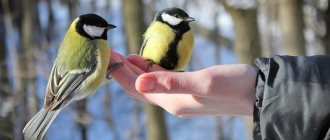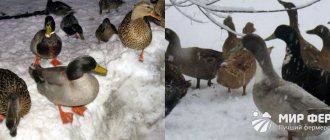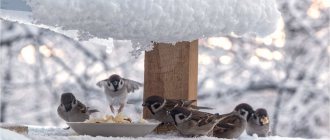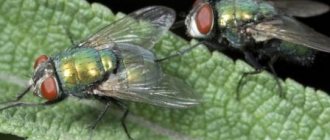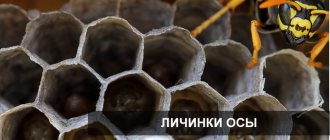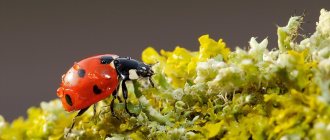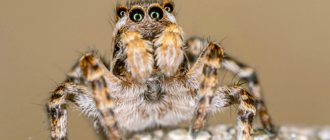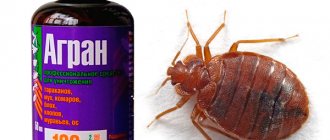Whether a swan is a migratory bird or not, most people cannot say, since they know practically nothing about this bird. They cannot answer where the swans spend the winter. In fact, these birds are the largest waterfowl, most species of which migrate to warm regions for the winter.
Whether a swan is a migratory bird or not, most people cannot say, since they know practically nothing about this bird
Swan: its species, is it a migratory bird or not?
You cannot remain indifferent when you see a flock of swan flying high in the sky; it has some special appeal. These are very beautiful birds, and the red beak and black paws make them especially elegant, emphasizing the whiteness of the feathers. With such a bright appearance, it is not easy for them to hide from prying eyes. Yes, they don’t need that. It is not without reason that the swan has been the most popular bird among artists, poets and singers since mythology. Content:
- Migratory and non-migratory species. Where do swans winter?
- Flight
- Brief description of nesting
- Interesting Facts
Swans (Latin name CYGNUS)
Family - Anatidae (ANATIDAE)
Migration Features
Spring migration
Regardless of where birds fly in winter, what species they belong to and where they nest, spring migration is usually very intense, and in a short time the birds return to their nesting places. Each pair strives to occupy the best site and larger territory, and begin to build a nest earlier. Swans are more aggressive in the spring - tired from a tiring flight, they often fight with their neighbors for their territory and nest.
The most pronounced and intense migration is observed in the northern regions, since the summer there is very short and the time for hatching chicks is limited. Another reason is the rapid growth of plants and the ability to spend a lot of time searching for food. This is facilitated by the long northern daylight hours.
The peak of spring migration occurs in late February and early March.
Autumn migration
In autumn, migration occurs less noticeably. Birds are more reluctant to fly, form flocks and spend more time traveling to their wintering grounds. Birds make more stops to feed and rest. The answer is simple: in autumn flocks there are many young birds that cannot handle long flights. The only exceptions are small swans. They tend to quickly leave cold nesting regions. Before the autumn migration, birds spend a lot of time in training flights so that the young become stronger and learn to use air currents. The training flight distance is several tens of kilometers. Most often, birds describe a circle above the resting and parking area of the entire flock.
Sources:
https://yes-dacha.ru/1391-razbiraemsya-lebed-pereletnaya-ptitsa-ili-net-i-vyyasnyaem-puti-ego-migratsii.html https://mnogo-krolikov.ru/pticy/lebed-ego -vidy-perelyotnaya-eto-ptica-ili-net.html https://nalugah.ru/pticevodstvo/lebedi/perelyotnaya-li-ptica-lebed-gde-zimuyut-i-kuda-uletayut.html
Migratory and non-migratory species. Where do swans winter?
During its life, a swan manages to fly around and see half the world, overcome enormous distances, but always returns to the same places of nesting, wintering and molting.
Its distribution areas are in Eurasia, North and South America, Australia and Asia. In short, different species live almost all over the world. There are 7 species in the world:
- Black swan (CYGNUS ATRATUS)
Range: Australia, Tasmania and New Zealand.
Not a migratory bird.
- Black-necked (CYGNUS MELANOCORYPHUS)
Range: South America.
Wintering areas: Paraguay and southeastern Brazil.
- Mute swan (CYGNUS OLOR)
Range: northern Europe and Asia, Australia and South Africa.
Wintering areas: northern Caspian Sea, Mediterranean, Africa, Asia Minor, Arabia, Iran, Afghanistan, India and China.
- Trumpeter Swan (CYGNUS BUCCINATOR)
Habitat: tundra of North America, southern Alaska.
Wintering place: Pacific coast of Canada.
- American (CYGNUS COLUMBIANUS)
Habitat: forest-tundra of North America.
Wintering areas: California coast and Florida.
- Small (CYGNUS BEWICIKII)
Habitat: exclusively on the territory of Russia in the tundra of the European and Asian parts of the country.
Wintering place: they fly to the countries of north-western Europe (Great Britain, France and the Netherlands), as well as to the countries of southern and south-east Asia (China, Japan and Korea) for the winter.
- Whooper swan (CYGNUS CYGNUS) Range: Eurasia;
Wintering areas: in Central and South Asia (India, Caspian Sea) and in the south of the Mediterranean.
Only a few of these birds do not fly south, but remain to winter in their homeland, and if they do, it is only if there is a sufficient amount of food and an unfrozen surface of the reservoir chosen for wintering. Winter finds such swans most often in reservoirs and warm water canals of power plants in large cities, where they flock from frozen ponds and rivers. The main reason for the migration of this bird is the lack of food supply in winter and severe frosts.
Swans, like geese and ducks, fly away to their wintering grounds in October–November, the last of the migratory ones, and delay their departure almost until the water bodies freeze completely, when the rivers are already covered with a crust of ice.
Gallery: types of swans (25 photos)
Flight
Swans fly away in flocks; during the flight they form a wedge, which sometimes consists of several hundred birds.
On the way, they try to stay along the shore of the reservoir. Swans fly mainly in the morning and afternoon, at an altitude of 50–100 meters. From time to time, the flock makes stops at reservoirs to feed and rest. The swan is the largest flapping bird. The weight of an adult bird is up to 12 kilograms; a significant weight load on the wing makes it difficult for the bird to take off, and it has to paw through the water for a long time, gaining height. Ornithologists have found that one flock of swan can travel about 3 thousand kilometers in 3 days, making only two stops along the way.
Location of Lake Svetloe
A small lake with warm springs, which attracts birds, is the only wintering place in Russia for swans in a continental climate. The swan reserve still exists in the Anadyr region of Chukotka, in the harsh climate of the Arctic tundra. On maps of the Altai Territory, the famous lake is often designated as Svetloe; the name appeared due to the purity and transparency of the water.
The lake is located south of the village of Urozhainoye, Sovetsky district (about 3 km along the road from the village), its area is 26.6 hectares. The Belokurikha resort is only 40 km away, but along the highway the distance is about 80 km; one-day excursions for winter vacationers are held regularly.
There are no tourist centers near the lake yet; guest houses are available for rent in the village of Urozhainoye. A ski base, the Bely Stan complex, is being built nearby. KBSU "Altaipriroda" conducts excursions for organized groups of tourists. A visit to the lake is included in the “Small Golden Ring of Altai” tour program.
You can see rare birds, which are believed to bring good luck, from November to March or April. Then the isolated population of swans, as scientists have found out, flies to the Salekhard tundra, and when the northern lakes freeze, it returns to Altai with stronger young offspring.
Not far from Swan Lake there are other non-freezing reservoirs where beautiful large birds spend the winter. The largest of them is Lake Koksha with a water surface of 48 hectares, located 4 km northeast of Urozhainy. Because of the clarity of the water, locals call it “Svetly”, which sometimes misleads tourists.
There are much fewer wintering birds and visitors there, so the birds are less timid. Most fairy-tale guests choose Svetloye (Swan), where there are observation decks for visitors.
Is a swan a migratory bird or not?
Swans are one of the largest swimming birds. Many are interested in the question of whether they are migratory and where do they go to spend the winter? Almost all white beauties leave their habitats and fly to warm countries, and thanks to their powerful body structure, the flight does not cause them any difficulties.
They fly away for the winter in a wedge, at the head of which is the strongest individual. In winter, white birds fly to the warm south. They usually spend the winter in the Mediterranean, the Caspian Sea and the South Asian coasts, where other migratory birds tend to go.
Migration routes
Despite the fact that swans are large birds, they are quite graceful in flight, but this is only at first glance. Despite all the beauty of flight, soaring skyward is not always easy. After all, only the wingspan can reach 2 meters. Only thanks to well-developed muscles are they able to fly long distances without getting tired for a long time.
The most famous species of swans is Whoopers. While in flight, they make loud sounds, which explains their name. They migrate in a certain way, forming a wedge led by a leader. The leader is the strongest bird, thanks to which a special aerodynamic force is created. This allows his comrades flying behind him to spend less energy flapping their wings.
When the leader gets tired, another bird replaces him. Occasionally they make short stops and continue on their way. Whoopers prefer to spend the winter on the coasts of the Black and Baltic Seas; they can often be found on the shores of Scandinavia. They choose secluded places with a lot of aquatic vegetation.
Black swans are the least likely to be seen. In addition, they spend summer and winter in Australia. You can only meet them in Europe or Russia in a zoo. Representatives of Black-necked Swans spend the summer in South America. But for the winter they can either fly away or stay in the same place.
The American swan goes to the Pacific coast of California or Florida for the winter, and when it gets warmer it returns to the tundra of North America. The mute swan, so named for the hissing sounds it makes, is rare. But if it can be found, it is only in the southern latitudes of Europe and Asia.
As soon as calendar spring arrives, migratory swans return home. But winter is not always in a hurry to leave, so more often the birds arrive, but the ice has not yet melted. They have to try hard to find a secluded place. More often they live in pairs, so they often begin to quarrel with newly arrived families.
While exploring the territory in search of food, birds do not forget about building a nest. Swans do not like to change their location often, so they approach construction thoroughly, piling up nests with branches, dry grass, and moss. To make the nest stable, swans choose places in shallow waters. As summer approaches, the couple has chicks that can take care of themselves literally from the first days. And with the onset of cold weather, the whole family goes to warm countries.
General description of white birds
White swans belong to the duck family, the goose subfamily; their closest relatives are the goose and goose. Most individuals have white feathers. Black and Australian swans have black feathers. The South American bird has almost the entire neck and head black, and the body and base of the neck are white.
The wingspan is up to 200 cm. The maximum weight of the bird is about 19-21 kg. The smallest individual weighs -7 kg. The male and female are practically indistinguishable in external characteristics. By species, birds differ in feather color and size.
An interesting feature of white individuals is that they exist as a married couple. The couple is located on some site. The territory where birds settle en masse is no longer as protected by individuals as in a certain area.
In large settlements, handsome whites treat other individuals favorably and calmly. The bird itself is quite patient and balanced. In a comfortable and safe environment, birds swim slowly and are silent.
How many times a year do wild ducks lay eggs?
With proper care, the female's egg production is up to 120 eggs annually. Domestic varieties of ducks begin to lay eggs when they are 140-160 days old.
Interesting materials:
What date is the holiday of the spirit? What date is the dismissal order? What date should I plant garlic for the winter? What date is the wedding? What date is Christmastide? What date is Maslenitsa this year? What date is Easter 2022 this year? What date is Tankman's Day in September? What date should advance payment and salary be paid? What kind of word is penalty?
Swan habitat
White individuals prefer to settle in areas where the climate is temperate and in tropical areas. They belong to waterfowl, and therefore live mainly in various types of water bodies. They feed there, in shallow water, on various mollusks, small crustaceans, fish and vegetation.
Most bird species live in the northern hemisphere, the black species lives in Australia and New Zealand. The black-necked swan, or as it is otherwise called the South American swan, is found in fresh waters in the south of South America, where it nested.
Black-necked birds do not live in the following countries:
- Asia;
- Central America;
- Northern regions of South America;
- Africa.
Zoologists note that the whooper species lives on the Eurasian continent, mainly in its northern part. In countries such as Iceland, Scotland, a number of Scandinavian countries, also in the territory from Kamchatka to eastern Sakhalin, on the Black, White and Baltic seas.
The whooper occupies territory mainly on the water. Prefers large lakes that are overgrown with grass, reeds and reeds along the edges of the banks, or on remote lakes in the forest. It happens that they are located on the sea coast in areas overgrown with reeds.
They settle in bodies of water near places where people live. If swans live close to people, they should not be disturbed.
The mute lives further south than the whooper swan. Occupies the southern and central European zone, as well as most of Asia. Mute swans, like other types of swans, are located in remote estuaries and overgrown lakes. Swans are also spotted in the swamps.
Altai Nature Reserve "Swan"
On Lake Svetloe the temperature does not drop below +4…+6 °C even in severe frost. In 1967, for the first time after a many-year break, 15 whooper swans, so called for the characteristic sounds they make, flew to the lake for the winter. Local residents were happy with the long-awaited guests and swan songs - they fed them and took care of them. In subsequent years, the snow-white flock increased, and in 1973 a nature conservation facility was formed - the Swan Sanctuary.
Since 1999, the area of the Reserve has been about 38,200 hectares; it is a life-saving rest zone for animals and birds during hunting. The reserve is the main attraction and pride of the Sovetsky district; on its territory there are:
- lakes Svetloe (Swan) and Koksha;
- section 95 km of the Katun River is a spawning ground for sturgeon fish;
- 70 islands - Katun skerries;
- hills - Talitskaya and Zmeinaya;
- spring at the foot of Zmeinaya Hill.
The efforts of the regional administration and the staff of the Reserve on biotechnical measures and protection are not in vain: the number of wild animals and birds is noticeably increasing. “Swan” is home to 35 species of animals listed in the Red Book of the Altai Territory. In 2016-2017, according to employees, 750 swans wintered in the Sanctuary.
The birds are fed with concentrated feed and grain, which is stored in tens of tons for the winter. Tourists can feed their feathered guests by purchasing bags of food on site. You should not expect grateful birds to take food from your hands - wild birds are very careful and do not swim close to people.
Lake Svetloye is a very small reservoir, its maximum depth is 2 m, width 100 m and length 1000 m. Surprisingly, it accommodates thousands of birds - swans, goldeneyes, ducks, gray geese, and there are also rare mergansers. Whooper swans are peaceful creatures, unlike the silent European relatives of mute swans, who are capable of pecking and drowning each other in the fight for territory or a female.
The best time to observe wary wild swans is before sunset and dawn; by noon, most whoopers leave the lake. Magnificent birds gracefully swimming through the water against the backdrop of Siberian snow are a fascinating sight, confirmed by numerous reviews from tourists.
Is the swan a migratory bird?
The white swan is a frost-resistant bird. If the white individual has not flown away to spend the winter somewhere warm, then the main thing for it is to find a body of water that does not freeze, then it will easily overwinter in a cold area.
In an unfrozen body of water, a white swan will feed itself. Conventionally, swans are divided into migratory, partially migratory and non-migratory individuals. Zoologists include the trumpeter swan, small swan, and white whooper swan as migratory birds.
They fly away for the winter on the northern coast of the Mediterranean and Caspian Seas, as well as in southern and south-eastern Asian countries. If the whooper has conveniently camped at the nesting site and the pond does not freeze in cold weather, then the white swan remains and does not go south.
Little swan chicks appear in July, and at the turn of August-September they already begin to fly, that is, they are capable of flights. And tundra swans go to winter in South and Southeast Asia.
The tundra white swan flies to Western European countries. The white bird, which migrates to warm countries, travels both short distances and thousands of kilometers. To the south, where most birds go, white swans usually fly away in the autumn months, like September or October. They return back in early spring, often in April.
The American swan is similar to the white whooper and tundra swans. Zoologists say that the American species has become rare. Individuals live in tundra forests in Canada and areas of Alaska. In winter, they fly to the shores of the Pacific Ocean; they have been seen from Alaska to Vancouver itself. The black-necked swan is located in the southern part of Argentina and Chile.
Due to climatic conditions, namely the close location of Antarctica, winter is very frosty. Black-necked individuals fly to places with mild and moderate climatic conditions and where they are able to reach. In areas of Paraguay, Uruguay, southern Brazil.
How to get to Swan Lake
From Novosibirsk to the wintering grounds of swans - 420 km, from Barnaul - 220 km. All roads to the lake lead through Biysk, located 68 km away.
The route looks like this: Biysk → Sovetskoe → Lake Svetloe. After the bridge over the Biya River, at the first traffic light in Biysk you need to turn right, towards Belokurikha. Having crossed Katun, at the roundabout take the exit with a sign for Sovetskoye and Altaiskoye. To the village of Sovetskoye, walk a distance of 45 km; at the first turn near the village, turn left. Then drive along Zavodsky Lane, then along Sovetskaya Street, cross the bridge over the Kamenka River and leave the village along Zarechny Lane.
It is 15 km along the asphalt to the village of Urozhainoye, after the settlement you need to turn right and follow the field road that goes around the fields to a large free parking lot. Next, walk about 250 m to the lake shore along the “swan” path.
Entrance is paid (100 rubles), but according to tourists’ reviews, you don’t always have to pay when passing the barrier. A fee of 50 rubles per person is charged for visiting the observation decks; children under six years old are admitted freely. In the parking lot there are tents with souvenirs, selling local honey and hot food - Siberian dumplings, shish kebab, hot tea with pies and pancakes.
Motorists sometimes complain about untimely clearing of snow from roads and poor-quality asphalt - but this is, perhaps, a common problem for the country. Sorrows are quickly forgotten at the sight of majestic snow-white birds.
What types of swans are there?
The taxonomic position of swans is simple. They belong to the genus of swans, which, like geese, is part of the order Anseriformes, and all together are in the duck family.
This genus includes 7 species: black, black-necked, mute, whelk, American, small, whooper.
The fact is that not all swans fly away for the winter, much less to distant lands. Their seasonal rhythms of life depend on the climate, as well as on the availability of food at their place of residence.
Why are some birds migratory and others not? The answer to this question is still simple - in winter, swans, ducks, geese and other waterfowl fly to places where bodies of water do not freeze. It is for this reason that some birds, having discovered an ice-free body of water along the way of their movement, do not fly south, but remain to feed in this small space of open water. However, after spring begins, all migratory waterfowl still flock to the place where they once raised their chicks. This fact is the biggest mystery of the nature of migratory birds.
Migration is a way to reduce the load on the food supply of its species to such an extent that it is possible to ensure constant growth of the flock at the expense of chicks
Some migratory birds: pictures with names and order of flight to the south
Birds whose food consists only of insects are the earliest to leave their place of residence. This is logical, because it is the insects that begin to hide or die with the onset of cold weather.
Migratory bird wagtail, photo
Behind them, those birds whose food is flowers, seeds, and fruits rush to the southern regions. They do this somewhat later than insectivores, and this is understandable: fruits and seeds are available for food for a very long time, until it becomes completely cold and there is no solid snow cover on the ground.
At the same time, birds fly away, which have a mixed diet in summer and only plant food in autumn. For example, this is a siskin - aphids and other small insects are gone in the fall, and it completely switches to seeds. Migratory bird siskin, photo And the last to escape the cold are the birds living on reservoirs when the surface of rivers and lakes is covered with ice. Among waterfowl, by the way, there is a tendency towards conditional migratory behavior: if the winter is warm and the water does not freeze, they do not fly anywhere. Waterfowl migratory birds: pictures Among birds that feed on plant or “live” food on land, conditional migratory behavior can also be observed. For example, these are jays and waxwings: the further south they live, the less often they leave their habitat in winter.
The ecological meaning of bird flights
If we apply an analogy from human life, the question arises about where migratory birds live on a permanent basis - where they feed in winter, or where they raise their chicks.
Migration is a way to reduce the load on the food supply of its species to such an extent that it is possible to ensure constant growth of the flock at the expense of chicks.
In winter, swans leave places with an excellent food supply, which becomes inaccessible in winter. By flying to places where there is no winter, they just wait out the winter. There, in reservoirs crowded with different inhabitants, it is possible for adult individuals to feed themselves for some time, but it will not be possible to raise offspring in the quantities necessary for the reproduction of the species. There are too many competitors and predators here.
"Fabulous place"
Modern people can no longer do without the Internet; visitors to Swan Lake also share their impressions on information networks. Some excerpts from recent tourist reviews:
- It’s true that amazing things are nearby! And so it is with this unexpected swan joy!
- A unique lake, the water is clean and transparent. It’s worth a trip with your family; it will be interesting for both adults and children!
- That's very beautiful. You can watch for hours.
- I haven't felt such emotions for a long time. For more than an hour I stood spellbound, watching the landing, or rather the landing of the swans on the water.
- The endless snow-white covers give the place a fabulous mystery and natural attractiveness. It seems that Morozko himself is about to emerge from the thicket and begin to lull you to sleep with the song of a January snowstorm.
- The evening sunset in pink tones gives the picture a fantastic glow. “The Nutcracker” is resting. If you are in those parts, be sure to visit this miracle of nature!
- In a word, the place is truly fabulous. And if you are not afraid of cold and distance, then you will get a lot of positive emotions here!
- Swans are known to be monogamous. Therefore, it is very interesting to watch couples... Romantic!
There is a belief that in places where swans winter, peace and love reign in families. Maybe because people there learn swan loyalty and devotion?
Useful materials:
- Cutaneous horn General description of the disease Cutaneous horn on the forehead or face (ICD 10 code - L57.0) -...
- Itching and odorless discharge Main causesBefore considering the factors that provoke the appearance of discharge that has a sour odor, it is necessary to immediately note...
- Normal temperature in animals Normal temperature in different types of animals Veterinary services Day hospital for animals Veterinary certificates Vaccination…
- Discharge in women What kind of discharge between menstruation is considered normal? Female discharge normally consists of mucus from the cervical canal, dead...
